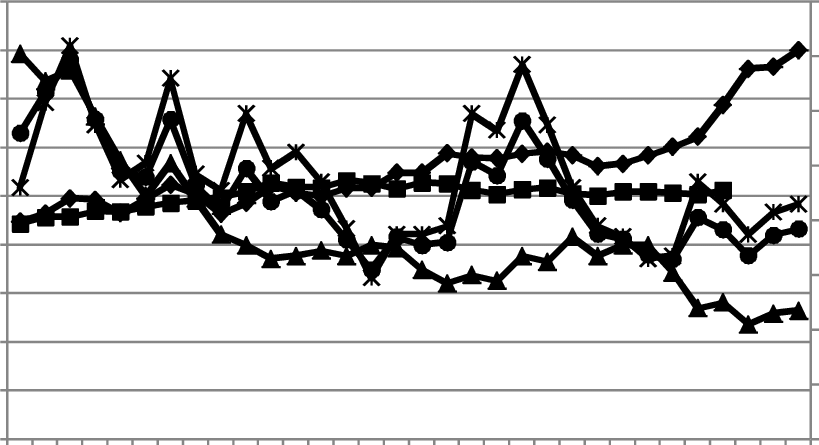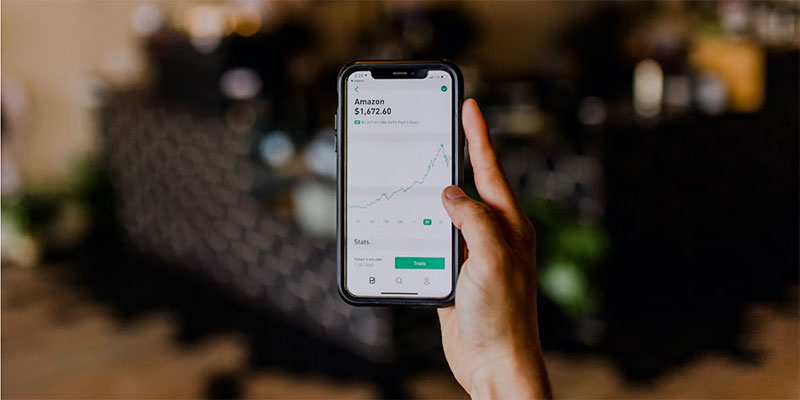What Are General Collateral Financing Trades?
Aug 01, 2024 By Rick Novak
Do you want to understand general collateral financing trades and how they might be relevant to your investments? If so, then you've come to the right place!
In this blog post, we'll explore the concepts of general collateral financing (GCF) trades – what they are, how investors use them in different markets, and their advantages and risks. With a better understanding of GCF trades, you can make more informed decisions about whether using this trade may benefit your portfolio.
Defining General Collateral Financing (GCF)
General Collateral Financing (GCF) trades are investments that allow investors to borrow or lend securities for a specified period of trade. Institutional investors, hedge funds, and other large financial institutions often use them to leverage their existing portfolios for short-term gains.
Essentially, GCF trades involve borrowing one security from another investor and providing them with collateral in return (like cash). During the loan period, the borrower can use the security to make money through trading or other investment activities. When the loan term ends, they can return it to its original owner.
In this way, GCF trades provide investors with access to capital quickly and efficiently without liquidating any assets. This can be especially useful for investors who need to raise funds quickly or make quick trades to stay ahead of the markets.
An important factor to consider when engaging in a GCF trade is that there is no exchange between buyers and sellers – it's simply an agreement between two parties. As such, ensuring that the collateral provided is adequate to cover any potential losses in the event of a market shift is essential. Understanding the nuances of lending and borrowing securities before entering into a GCF trade is important, as they can have different risks.
Understanding the Mechanics of GCF Trades
Understanding the mechanics of GCF trades is an important step for any investor looking to use these types of investments. Generally, when engaging in a GCF trade, investors will execute an agreement with the counterparty that outlines the terms and conditions of the loan. This includes details such as the type of security being lent or borrowed, the length and amount of collateral provided, and any other relevant information.
Once this agreement has been reached, both parties must deposit their collateral into a custodial account as part of their GCF transaction. When the loan term ends, they can either return the security to its original owner or keep it by replacing it with different securities or cash-based collateral.
Advantages of GCF Trading
One of the primary advantages of GCF trading is its liquidity. As GCF trades involve both borrowing and lending securities, investors can quickly access large capital without liquidating assets. This makes it an attractive option for those who need money immediately without impacting their portfolios in the long term.
Moreover, the collateral in GCF trades helps protect both parties from defaults or losses if the markets move against them. This means that if a trade turns bad, the collateral can be used to cover any losses incurred by either party involved.
Finally, GCF trades can benefit portfolio diversification with minimal effort and cost. By entering a GCF trade, investors can gain exposure to different markets and assets without investing large sums of money. This can help diversify their portfolios while also reducing risk.
Risks Associated with GCF Trading
As with any investment, there are risks associated with GCF trading. One of the primary risks is that of counterparty default. If the borrower or lender fails to meet their obligation and does not repay the loan on time, both parties will lose money. It's, therefore, important to ensure proper due diligence when entering a GCF trade to avoid this risk.
In addition, market fluctuations can also affect GCF trades since these types of investments rely heavily on collateral which may decrease in value over time. As such, investors need to understand the markets they are dealing in and monitor them closely to protect their positions from losses.
How to Find the Best GCF Rates
Finding the best GCF rates requires careful research and due diligence. Investors should look for a lender willing to offer competitive rates and flexible terms so that they can adjust their position if necessary. When selecting a lender, they should also consider factors such as credit ratings, collateral ratios, and loan terms.
Finally, comparing different lenders is important to find the best deal possible. This includes researching the online marketplace for suitable offers and taking advantage of any special promotions or discounts lenders offer. By doing this, investors can ensure they get the best rate possible for their GCF trades.
Top Tips for Successful GCF Trading
Successfully navigating GCF trades requires a thorough understanding of the markets and careful risk management. Here are some tips to help you succeed:
- Research and understand the current market conditions before entering into a GCF trade.
- Compare different lenders and their offers to find the best rate for your trade.
- Diversify your portfolio by using collateral from multiple sources to reduce overall risk.
- Monitor the markets closely so that you can adjust your positions if necessary.
- Be aware of any risks associated with defaulting on loans or other agreements related to GCF trading.
- Utilize leverage wisely so that you can maximize returns while minimizing losses.
FAQs
Q: How do GCF trades work?
A: In a typical GCF trade, an investor pledges their portfolio of eligible securities as collateral in exchange for funds. The investor must then make a margin call when the value of the collateral falls below an agreed-upon level. The investor can use the borrowed funds to purchase other assets or cover short positions.
Q: What are the advantages of GCF trades?
A: One of the most attractive features of GCF trades is that they allow investors to access lower borrowing costs than traditional margin borrowing. Additionally, GCF trades provide portfolio diversification and liquidity since these trades can be easily unwound and the funds released back into your account. Finally, there is less counterparty risk in a GCF trade because all securities are held by a custodian instead of being lent out directly from your account.
Q: What are the risks of GCF trades?
A: While there are many advantages to using GCF trades, it’s important to understand that they also come with certain risks. Primarily, if your collateral's value decreases significantly, you will need to make a margin call to cover the shortfall. Additionally, since the securities held by custodians may not be available for immediate sale, you could incur a loss or delayed payment if you need to liquidate the securities quickly. Lastly, like any investment strategy, there is always potential market risk associated with GCF trades.
Conclusion
General collateral financing trades can be a great option for investors to diversify their portfolios and access lower borrowing costs. However, it’s important to understand the associated risks before committing to one of these trades. By understanding the concepts of GCF, you can decide whether this type of trade may benefit your investments.

Total Enterprise Valuation (TEv): Definition, Calculation, Uses

What Is a Joint and Survivor Annuity?

Form 1099-DIV, Dividends and Distributions Definition

What Is an IPO Lock-Up?

Charting the Richest Amazon Shareholders of 2023: Who's Leading the Pack?

Getting Your Real Estate License

How Are Manufacturing Expenses Vary From Production Costs

How a High P/B Ratio Correlates to High ROE

Are Stocks With Low P/E Ratios Always Better?


